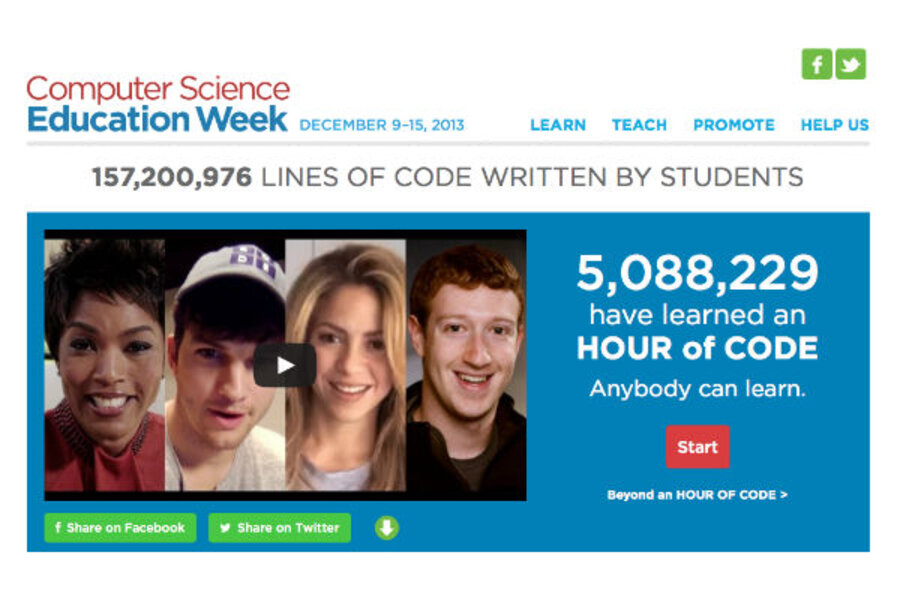Hour of Code welcomes students into the world of computer science
Loading...
"Any sufficiently advanced technology is indistinguishable from magic." That statement, by British science fiction writer Arthur C. Clarke, has never been more relevant than it is today. We live in an era that features self-driving cars; unmanned flying drones; and wireless devices that fit in the palms of our hands and connect us to a healthy chunk of humanity's knowledge.
But when you don't understand something, you can't really master it – and in some ways, the technology begins to master you. That our overwhelming dependence on technology has arrived hand-in-hand with a general technological illiteracy is abstractly alarming. What is more concrete is that all these gadgets need programmers, interface designers, production supervisors, and far more jobs in order to be created, manufactured, and distributed. We're facing a tech job crunch: too many jobs, not enough computer science graduates ready for the next generation of work.
Enter the Hour of Code, a national effort to get 10,000,000 students to spend an hour learning how to program using a set of pre-designed tutorials during Computer Science Education Week, December 9-15.
By getting kids thinking about writing computer code, the Hour of Code is meant to prime the pump for more learning and, ideally, creating more computer science graduates in the years to come. The program's tutorials make use of popular games like Minecraft and Angry Birds, and some of them are completely computer-free, relying on paper, pencil, and simple props like plastic cups to demonstrate that computational thinking isn't necessarily tied to computers.
All of this takes me back to Henry David Thoreau elementary school in the early '80s, where programs I learned like the Logo turtle and Rocky's Boots (teaching 1960s programming language and Boolean functions) were at the cutting edge of getting kids ready for the computer-dominated future that was inexorably bearing down upon us.
And am I now a programmer? Absolutely not. But having some insight into the logical underpinnings of the systems that now govern just about everything is no small gift, and one that kids everywhere should have a chance to enjoy.








